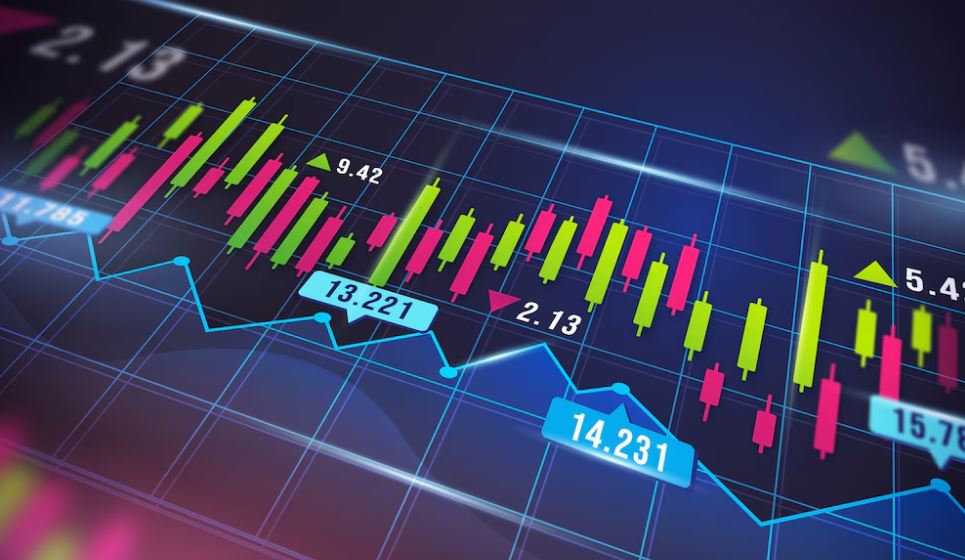
Consider lowering a large, weighty object from a considerable height. Something as lifeless as a dead cat will still bounce, albeit momentarily. This analogy captures the dead cat bounce, a phenomenon that many investors fear, particularly in erratic markets. A dead cat bounce is a brief, transient increase in the price of an asset or stock that has been falling, typically followed by the trend continuing downward. Investors should be cautious of this phenomenon because it’s simple to believe that the market is starting to recover after a brief rally, only to have prices fall once more.
In the realm of investing, a dead cat bounce frequently happens when investors begin to believe that the worst is over after witnessing a modest increase in a stock’s price following a protracted decline. Although the surge is usually unsustainable, it can be triggered by a variety of things, including short-covering or an unexpected spike in good news. It provides a brief reprieve before the inevitable decline resumes, much like a flicker of life in a dying market. Investors can avoid falling for a phony rally and make better strategic choices by recognizing these brief recoveries.
Dead Cat Bounce – Key Market Insights and Reference Points
| Aspect | Details |
|---|---|
| Definition | A brief, temporary recovery in a declining market or asset, followed by a continuation of the downward trend. |
| Origin of Term | Popularized in the 1980s by Wall Street analyst Raymond DeVoe Jr.; based on the saying “even a dead cat will bounce if it falls from a great height.” |
| Typical Duration | A few days to several weeks; rarely signals a lasting reversal. |
| Common Causes | Short covering, misleading news events, temporary market sentiment shifts, or speculative buying. |
| Key Indicator | A price rebound that fails to surpass previous resistance levels and soon resumes decline. |
| Technical Pattern | Resembles a small V-shaped recovery within a larger downward trend; followed by a new low. |
| Similar Terms | Relief rally, sucker’s rally, bear market rally. |
| Investor Risk | High risk of mistaking a bounce for a reversal, leading to premature re-entry into declining positions. |
| Notable Example #1 | Cisco Systems (2000–2002): Saw brief rallies during the tech collapse before hitting new lows. |
| Notable Example #2 | March 2020 (COVID-19): A brief rally occurred between two major drops before recovery later in the year. |
| Expert Tip | Use fundamental and technical analysis together. Look for sustainable momentum before assuming a reversal. |
| Reference Source | Investopedia – Dead Cat Bounce Definition |
The History and Application of “Dead Cat Bounce”
Raymond F. DeVoe Jr., a Wall Street analyst, coined the phrase “dead cat bounce” in the 1980s to characterize a brief price increase in a collapsing market. “Even a dead cat will bounce if it falls from a great height,” he famously wrote. Despite being morbid, the analogy effectively captures the essence of this market behavior. It communicates that the beginning of a trend reversal is not always indicated by a brief rally in a declining market. The expression quickly became popular and a mainstay of market commentary, particularly in uncertain economic times.
For investors caught in its clutches, the dead cat bounce is no laughing matter, despite its somewhat humorous and grim moniker. Losses may result from this misplaced optimism, especially for those who jump in headfirst thinking the market has turned around when it hasn’t.
What Causes a Dead Cat to Bounce?
The dead cat bounce phenomenon is caused by a number of factors, but they are all rooted in the same thing: market psychology. A stock that has experienced a large decline may be seen by investors as cheap and ready for a rebound. The stock price may rise as a result of a brief surge in purchases. This increase is frequently a reaction to technical factors or transient sentiment shifts rather than any underlying improvement in the business or asset.
For example, short covering is frequently the cause of a dead cat bounce. The price may momentarily increase when investors who bet against a stock are compelled to repurchase shares due to the increased demand. Furthermore, in a market that is otherwise bearish, good news—whether it be a partnership, a product announcement, or even conjecture—can occasionally lead to a rally. However, the price is likely to drop once more if the fundamental problems with the market or stock don’t change.
Finding the Dead Cat Bounce: A Difficult Task for Investing
Timing is one of the biggest challenges in spotting a dead cat bounce. Because of its transient nature, this market phenomenon frequently gives the impression that the market has turned in the right direction, at least temporarily. Dead cat bounces can be very difficult to identify in real time, and investors only realize they were caught in the middle of one in hindsight.
By searching for specific technical indicators, such as a brief price spike followed by a failure to break through prior resistance levels, traders and analysts may attempt to spot a dead cat bounce. Nevertheless, there is no infallible way to forecast a bounce’s lifespan or demise. What appears to be a rally frequently turns out to be a brief pause before the decline continues, as is the case with many market cycles.
Examples of Dead Cat Bounces in History
Throughout history, there have been many instances of the dead cat bounce, which is frequently seen during times of severe market distress. Consider what happened after the dot-com bubble burst. Several stocks, including Cisco Systems, saw brief recoveries after the tech-heavy Nasdaq fell sharply from its 2000 peak, but they fell again as the overall downtrend persisted.
Similar to this, during the 2008 financial crisis, many investors thought the worst was over because markets first recovered multiple times. All of these rallies, though, were short-lived as the market kept plunging deeper into chaos. Global markets have recently seen sharp drops in the wake of the COVID-19 pandemic, followed by a number of dead cat bounces that offered brief optimism before a more severe decline.
Can You Make Money Trading the Dead Cat Bounce?
A dead cat bounce may present a chance for short-term traders to turn a profit quickly. By entering at a lower price, selling as the rally peaks, and then exiting their positions before the price drops again, these traders frequently profit from the brief uptick. Pursuing these short-term recoveries, however, can be riskier for long-term investors because they run the risk of holding onto assets that depreciate over time.
Some may adopt a more cautious stance, waiting for the market to stabilize before making their moves, while others may view the dead cat bounce as a chance to profit from a rebound. In any case, spotting a dead cat bounce can be extremely helpful in preventing investors from becoming enmeshed in a short-lived rally.
How to Stay Out of a Dead Cat Bounce Trap
Any brief rally should be approached cautiously by investors, especially if the market is still not favorable. Instead of letting short-term price fluctuations influence you, it is best to concentrate on a stock or asset’s long-term fundamentals in order to avoid the traps of a dead cat bounce. Pay close attention to industry dynamics, corporate earnings, and general economic trends. The dead cat bounce is probably only a brief spike if these indicators don’t point to a price recovery.
Technical analysis can also yield insightful information. Instead of jumping into a stock that is merely recovering from a steep decline, investors can watch for indications that the price is beginning to level off or exhibit resistance. Investors can steer clear of being caught up in transient market swings and instead concentrate on creating a more robust portfolio by making data-driven decisions.
The Cautionary Tale of the Dead Cat Bounce
The dead cat bounce serves as a reminder of how volatile markets can be and how difficult it can be to navigate downturns. Even though these quick recoveries can be alluring, they hardly ever indicate a real trend reversal. Investors should remain rooted in their long-term strategy and use good analysis to inform their choices rather than following every rally. Knowing the mechanics of a dead cat bounce is essential for avoiding costly errors and making better decisions in the face of market uncertainty, regardless of your level of experience as an investor.
